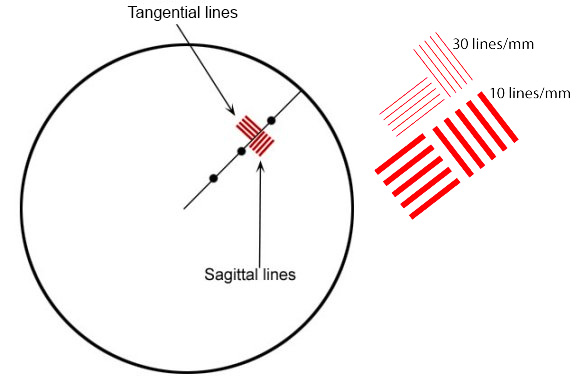Equipment
Just MTF Charts: Rokinon / Samyang Lenses
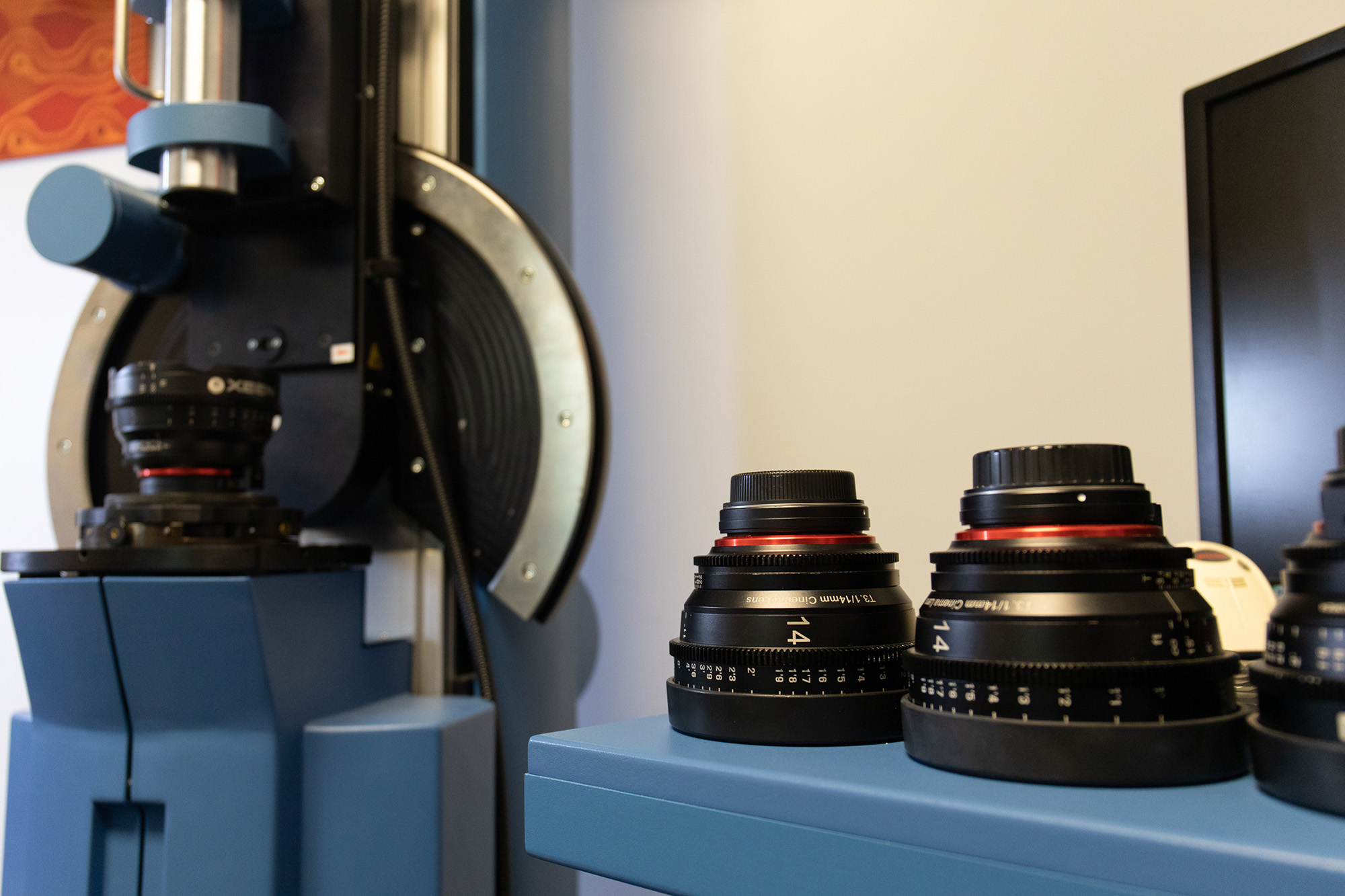
I’m going to add some qualifications to the Rokinon / Samyang MTF post. First, the results are a mixture of both brands (which are identical except for the label). Lensrentals stocks mostly Rokinon labeled because of better (the bar is low here) service in the U.S., so the website calls them Rokinon. Our software calls them Samyang because Samyang Optics actually manufactures all of them. So you’ll see a graph labeled Samyang with links to a lens labeled Rokinon.
Second, this post includes both the photo lenses and the Xeen Cinema lenses. We’ll be putting out the MTF charts for other Cinema lenses following the photo series. While many cinema lenses are rehoused photo lenses, the rehousing itself might make some differences in variation, or even slight differences in optical performance. Because we only have results for a few Rokinon lenses we’re going to put their Photo and Cinema lenses in the same post.
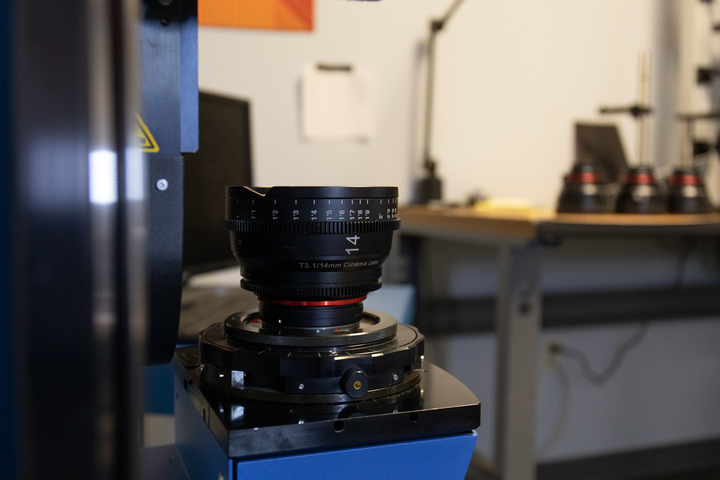
Finally, I’m going to address 32 inevitable comments that are coming, basically stating “I have one of those, and it’s way better than what you say”. Good for you, my friend; I’m not surprised. Remember these are average MTFs of multiple copies done in multiple rotations. Half of you that own the lens should have one that’s better than the graph, half of you worse.
That’s true for any lens, but Rokinon’s have more variation than most lenses, so the difference is more noticeable. I have carefully kept variation graphs out of this series of posts because ‘just MTF’. But in this case, it’s worth mentioning. In the comparison below the area of the graph shows the range that 96% of copies will fall in. It should be pretty obvious that more variation means a bigger difference between a good copy and a not so good copy.

Lensrentals.com, 2019
Put into words, the Samyang and Nikon lenses have about the same average MTF. But if I mixed up 10 copies each of the Samyang and Nikon 35mm f1.4 lenses, I can guarantee you that the best copies of the group would be Samyang. Also, the worst copies would be Samyang. So I fully expect some ‘my Samyang is way better than you say’ and ‘my Samyang is way worse than you say. That’s how statistics work.
Because I sometimes get quoted out of context, let me be really clear about what I mean. I’m not trashing Samyang/Rokinon lenses; I like them and I own a couple personally. They offer remarkable value for what they deliver. But there’s no magic; you don’t get the same build quality, quality control, or optical adjustments that you do in a lens costing 5 times as much.
Finally, just in case someone asks, the ‘Cine DS’ line is identical to the photo lens other than geared rings. We’ve tested them and they are optically identical, just to confirm that. The Xeens are mechanically different and therefore it’s possible that performance could be slightly different, so I show them separately.
A Quick How to on Reading MTF ChartsIf you’re new here, you’ll see we have a scientific methodology to our approach, and use MTF charts to measure lens resolution and sharpness. All of our MTF charts test ten of the same lenses, and then we average out the results. MTF (or (or Modulation Transfer Function) Charts measure the optical potential of a lens by plotting the contrast and resolution of the lens from the center to the outer corners of the frame. An MTF chart has two axis, the y-axis (vertical) and the x-axis (horizontal). The y-axis (vertical) measures how accurately the lens reproduces the object (sharpness), where 1.0 would be the theoretical “perfect lens”. The x-axis (horizontal) measures the distance from the center of a lens to the edges (measured in millimeters where 0mm represents the center, and 20mm represents the corner point). Generally, a lens has the greatest theoretical sharpness in the center, with the sharpness being reduced in the corners. Tangential & Sagittal LinesThe graph then plots two sets of five different ranges. These sets are broken down into Tangential lines (solid lines on our graphs) and Sagittal (dotted lines on our graphs). Sagittal lines are a pattern where the lines are oriented parallel to a line through the center of the image. Tangential (or Meridonial) lines are tested where the lines are aligned perpendicular to a line through the center of the image. From there, the Sagittal and Tangential tests are done in 5 sets, started at 10 lines per millimeter (lp/mm), all the way up to 50 lines per millimeter (lp/mm). To put this in layman’s terms, the higher lp/mm measure how well the lens resolves fine detail. So, higher MTF is better than lower, and less separation of the sagittal and tangential lines are better than a lot of separation. Please keep in mind this is a simple introduction to MTF charts, for a more scientific explanation, feel free to read this article. |
Rokinon Photo Lenses
One thing just to stop questions; we don’t have access to most of the “AF” Rokinon lenses for testing, and don’t expect Lensrentals will carry them in significant quantity. They aren’t good rental items. I did add the 50mm f1.4 AF, which is popular in Sony mount, but even then I don’t have the usual 10 copies.
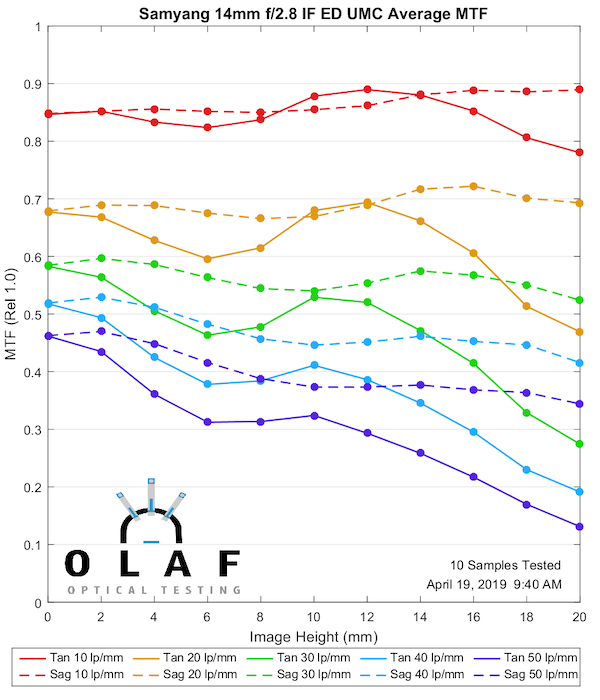
Lensrentals.com, 2019
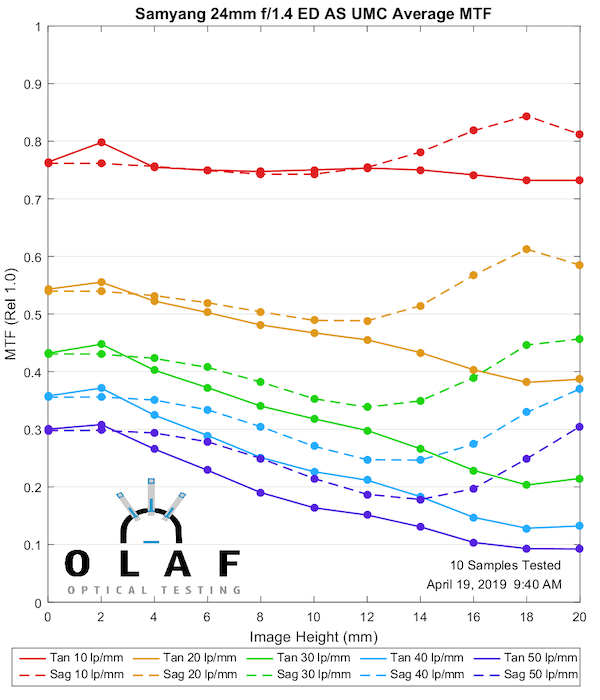
Lensrentals.com, 2019
Note: You will notice here, and on the 50mm something we called back in the day ‘the inexpensive hybrid aspheric peak’ at 2mm. These tests were done on early copies and manufacturing of hybrid aspherics has improved since then.
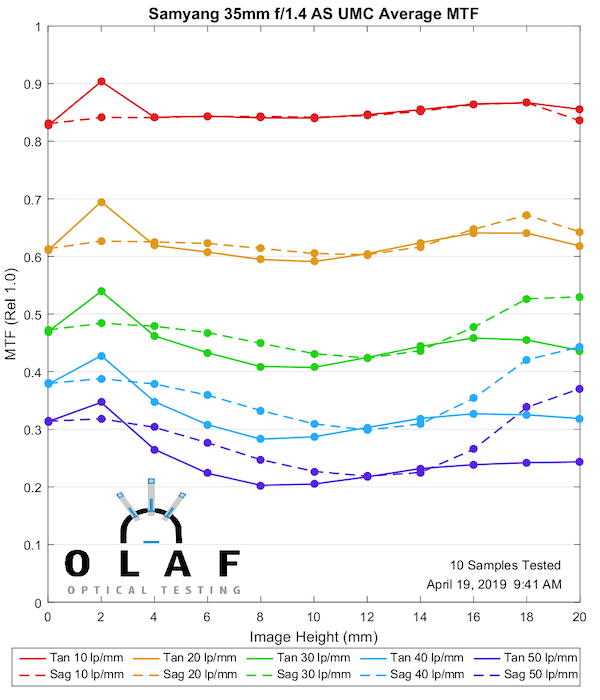
Lensrentals.com, 2019
Rokinon 50mm f1.4AS IF
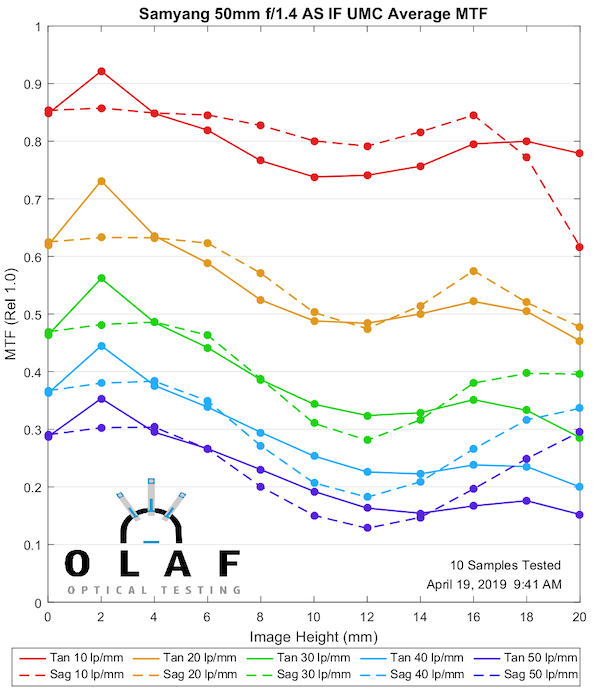
Lensrentals.com, 2019
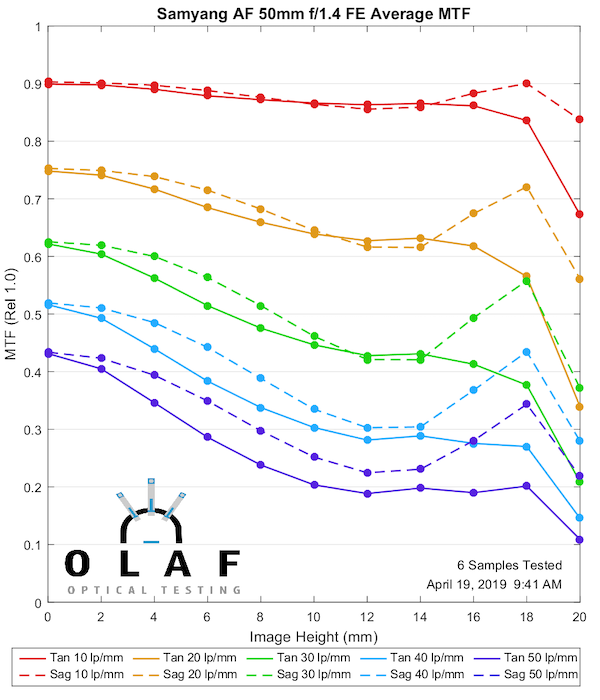
Lensrentals.com, 2019
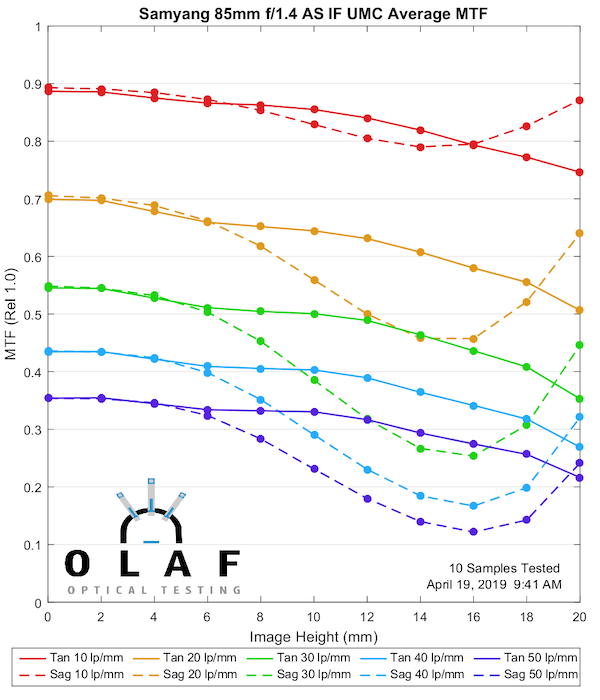
Lensrentals.com, 2019
Xeen Cinema Lenses
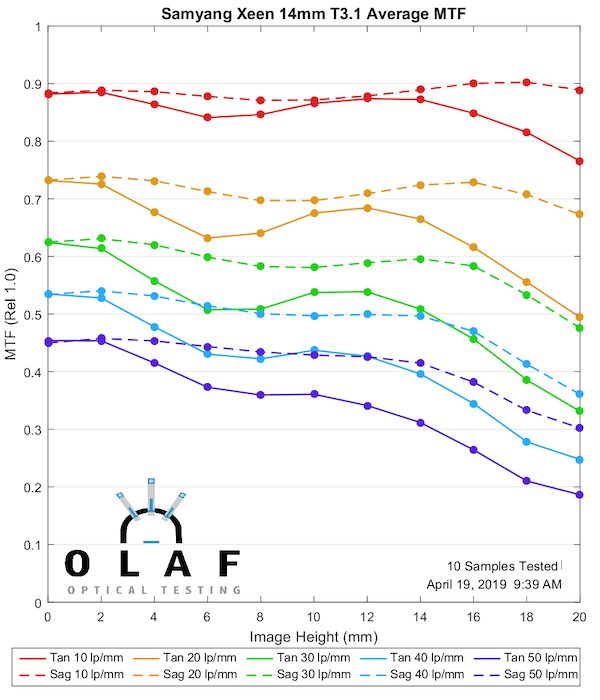
Lensrentals.com, 2019
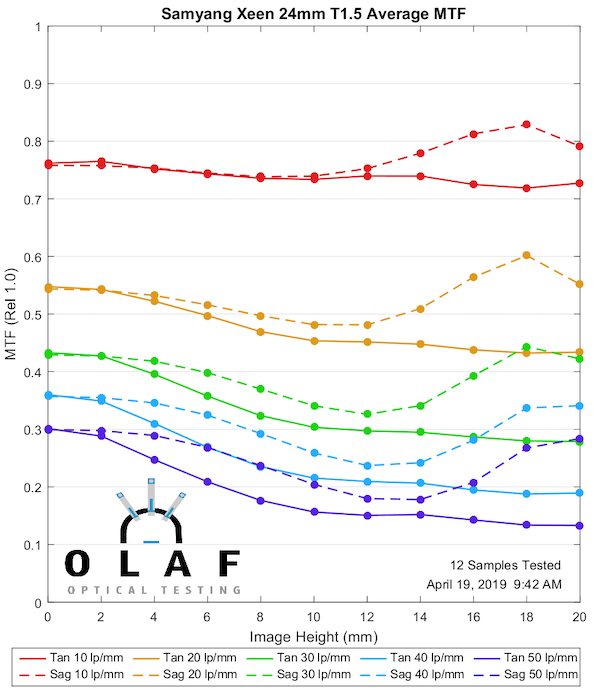
Lensrentals.com, 2019
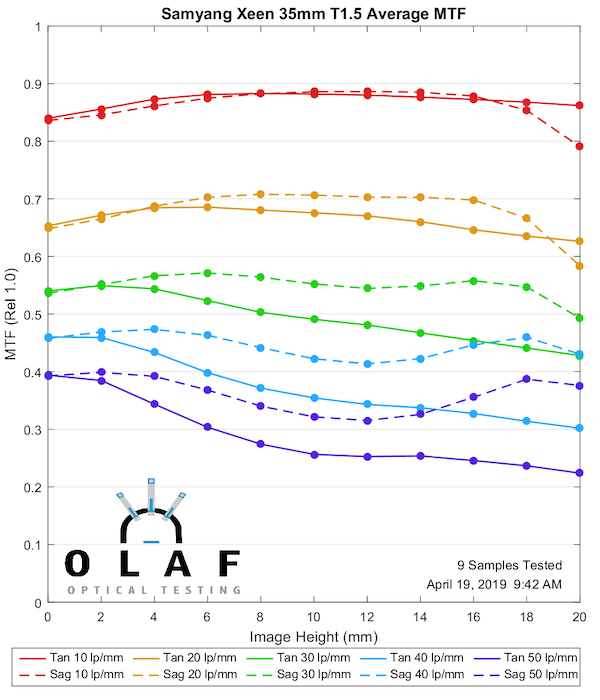
Lensrentals.com, 2019
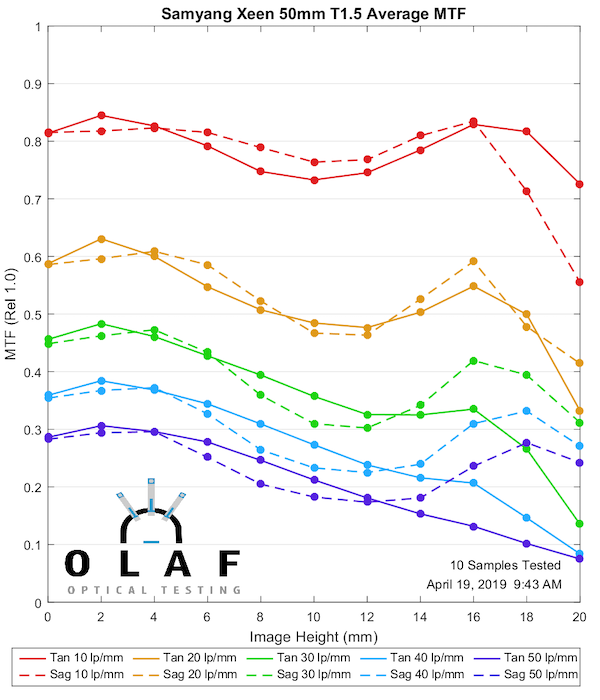
Lensrentals.com, 2019
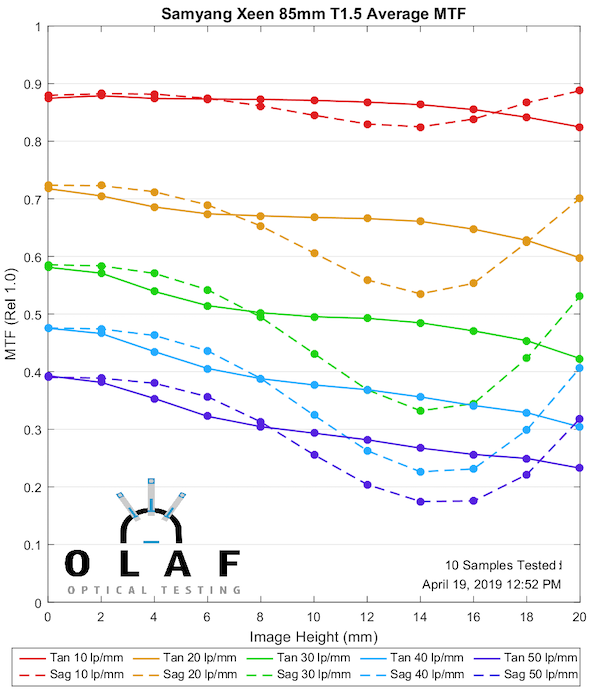
Lensrentals.com, 2019
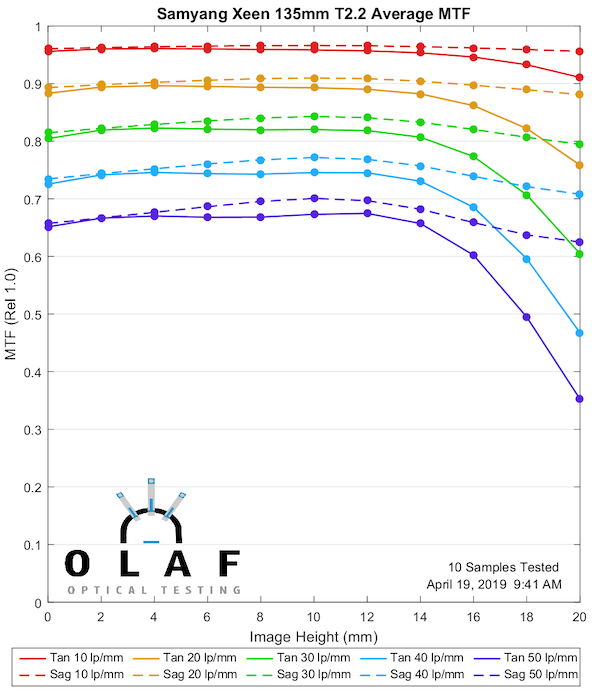
Lensrentals.com, 2019
Roger Cicala, Aaron Closz, and Brandon Dube
Lensrentals.com
April, 2019
Author: Roger Cicala
I’m Roger and I am the founder of Lensrentals.com. Hailed as one of the optic nerds here, I enjoy shooting collimated light through 30X microscope objectives in my spare time. When I do take real pictures I like using something different: a Medium format, or Pentax K1, or a Sony RX1R.
